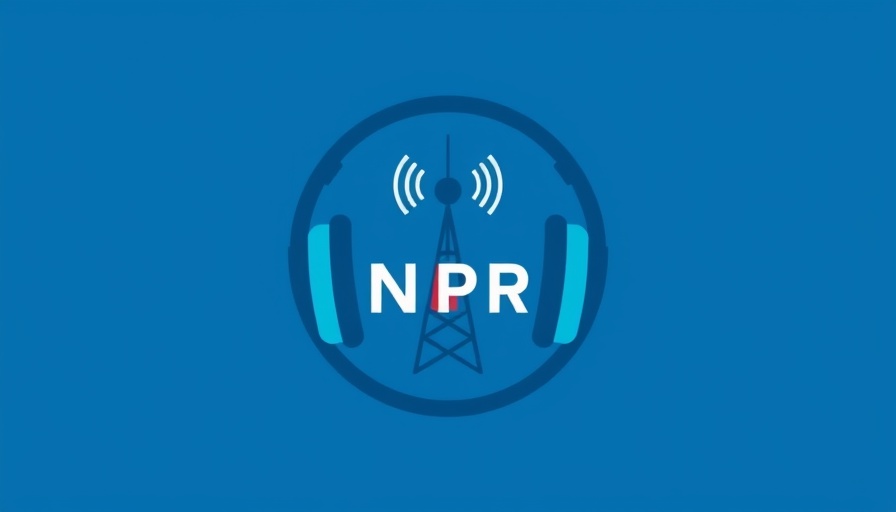
Understanding the Cuts: What’s at Stake for Global Health
The recent cuts at the Centers for Disease Control and Prevention (CDC) have sent shockwaves through our healthcare system, reverberating especially in global health programs. Following the directive from Health and Human Services Secretary Robert F. Kennedy Jr. on April 1, the CDC has witnessed a staggering 25% reduction in staff and a 35% decrease in contracts. These drastic changes have raised concerns about the agency's capacity to combat health crises globally, particularly in regions where support is desperately needed.
The Impact of Eliminating Maternal and Child Health Programs
Among the notable casualties of this restructuring was the CDC’s Maternal and Child Health Branch, which was essential in providing HIV treatment to vulnerable populations worldwide. The closure of this branch terminated all 22 staff members, many of whom were involved in pivotal programs that ensured the health of over 300,000 infants and 380,000 pregnant and breastfeeding women living with HIV across various regions.
These programs were not just bureaucratic operations; they represented a lifeline for many families, and their abrupt termination raises questions about the future of maternal and child health initiatives globally. The repercussions could be dire—potentially reversing years of progress achieved by federal programs such as PEPFAR, introduced in 2003, which helped save an estimated 25 million lives.
Voices from the Frontline: Perspectives of CDC Employees
In conversations with current employees of the CDC, it is apparent that the tone of disbelief and dismay is palpable. Many describe the organization's commitment to global health as both critical and indicative of their national responsibility. Employees, who chose to remain anonymous, expressed their frustration and concern about the lack of transparency from HHS and the negative implications these cuts hold for public health worldwide.
One employee candidly noted, "We've stood at the forefront of addressing global health challenges, and now it feels as though we've been sidelined during a critical moment. If we don't invest in these programs, are we prepared to face the consequences of neglecting maternal health on a global scale?" Their sentiments reflect a growing worry among public health professionals regarding the efficacy of health services in resource-limited settings.
Exploring the Broader Trends in Global Health Cuts
The cuts at the CDC are not occurring in isolation. They reflect a broader trend mobilizing against public health funding globally—a trend fueled by political agendas and economic constraints. Many health experts worry that abandoning these programs will create gaps in healthcare delivery systems that developing nations depend on. For instance, the Global HIV and TB Division, which experienced significant staff reductions, will likely falter, impacting disease surveillance and treatment access.
This evolving landscape calls attention not only to the necessity of advocacy for global health funding but also to the need for a systemic change in how governments approach public health initiatives. Understanding these trends can help CEOs and business leaders in healthcare and technology predict and navigate upcoming challenges within their sectors.
Future Predictions for Global Health Initiatives
As we look to the future, the consequences of these cuts may reshape the global health environment. Experts believe that without substantial investments in public health initiatives, we might witness a resurgence of diseases previously under control, leading to greater health crises. This scenario could also strain the resources of humanitarian missions and health NGOs worldwide, which often fill the gaps left by governmental programs.
Healthcare professionals predict an increased responsibility on private sectors to step into these voids, which presents unique opportunities for innovation and collaboration. For business leaders, this can translate into avenues for partnerships that support health initiatives while driving growth in the healthcare technology sector.
Taking Action: Responsibility of Business Leaders in Public Health
As leaders across industries analyze these developments, it becomes imperative to rethink how businesses can leverage their resources toward public health improvements. Engaging in partnerships with NGOs, providing funding for maternal and child health initiatives, and developing technology that improves health service delivery are just a few ways to mitigate the impact of cutbacks in governmental programs.
By prioritizing these efforts, businesses can not only contribute to global health but also enhance their corporate social responsibility profile. As the phrase goes, "an ounce of prevention is worth a pound of cure," and in this case, proactive engagement may very well prevent a burgeoning public health crisis.
Conclusion: The Call to Action for CEOs and Marketers
As we move forward, the ramifications of the CDC’s cuts reveal the interconnected nature of health programs and business interests. Emphasizing the need for collaboration between public health systems and private sectors will be crucial. Now is the time for business professionals to take proactive steps to support global health initiatives through funding, advocacy, and innovation.
Explore how your organization can play a role in advancing health outcomes globally by investing in initiatives that support these vulnerable populations. Your efforts can make a significant difference in the lives of countless individuals.
 Add Row
Add Row  Add
Add 




 Add Row
Add Row  Add
Add 

Write A Comment